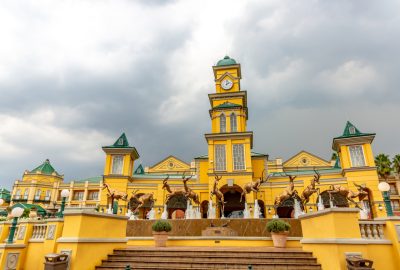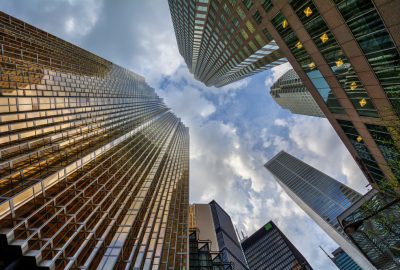The more you know about Johannesburg the less appealing it gets. Not that it’s very appealing at first sight (or the second). The city is humongous and nearly impossible to explore without a car. That’s to be expected from a metropolis inhabited by over 5 million people. Let’s address the elephant in the room, though. Is it safe? Everyone is trying to sell “Joburg” as the friendliest city on earth. They’ll tell you that people are the warmest and most welcoming towards tourists. The same guys will tell you that you need to take an Uber to the convenience store around the corner. Walking half a mile in broad daylight is not 100% safe here. Naturally, there are safe and unsafe districts like everywhere else. You will see tourists walking around, sure, but usually accompanied by local guides. As if it was some urban safari. There still is a lot of tension between people here. Racial segregation has been a thing of the past for decades, yet people tend to stick to their own. “South Africa has come a long way since the 1970s”, but has it really? There’s this unease in the air that you won’t understand unless you know what Johannesburg was built upon. I won’t delve deep into the history of apartheid, but its stench still lingers here. Mandela might have cracked the wall, but its foundations are holding well.

The Gold Reef City Theme amusement park in Johannesburg located on the site of an old gold mine; the atmosphere of the times of the "gold rush" is very faithfully recreated here: a street of 19th century buildings, staff in typical costumes, shops, hotels and taverns in the old style
Downtown Johannesburg is relatively safe, at least by day. This is the yuppie district, and especially Johannesburg’s Central Business District, short named CBD, looks almost like New York with all the skyscrapers dominating the skyline. Downtown is what’s being shown on the brochures, with charming alleys with cafes and bars. The New Town Cultural Centre and the famous Market Theatre are what I would call landmarks. Mandela’s villa in the posh residential districts is also considered one. His grandchildren still live there so it’s awkward to just hang outside. That doesn’t stop people from visiting to pay their respects. You’ll find thousands of rocks with names on them stacked alongside the wall. The Melville district is where you’ll find the hottest nightlife; a lovely area like New Orleans.
Taking a daytrip to Pretoria is a nice break from busy Johannesburg. It’s just half an hour away if you take a train. Pretoria is the capital of South Africa in the traditional sense. All the embassies and government buildings are here. It’s a very pleasant, serene city, and feels almost like walking through a giant park. The contrast between this and the grey Joburg is striking. Johannesburg, “the wealthiest city of South Africa” was built on gold. That’s why it’s known as the Golden City. It all started when the Dutch East India Company arrived at Cape of Good Hope and settled in the area. The Brits and other European nations arrived and the parties came to a disagreement. The Cape was taken over and the Dutch were bullied out. They packed their bags (wagons) and left. It’s basically an African Wild West story but in the eastern part of the continent. They eventually settled in the Transvaal region and lived off the land. They discovered vast gold and diamond deposits, which became both a curse and a blessing. It took two wars and eradication of the Zulu Kingdom for the province to finally have some room to breathe. That’s a very simplified summary of how Johannesburg came to be.

Central Business District (CBD): one of the main business centers of Johannesburg, the densest cluster of skyscrapers in Africa; many buildings are now emptying as white people flee to safer northern suburbs
The mining business is still going strong here. There’s even a gold rush themed amusement park called The Gold Reef City nearby. You can tour what remains of the Crown Mines here, it was one of the richest deposits in the world. I think it’s super awkward that you have this family fun space here while Soweto is literally just a few blocks away. South African gold empire was built on the blood and the sweat of migrant workers, mostly natives. These suburban “townships” were built to house the coloured community, which was denied access to downtown Johannesburg. Basically these were nothing less than ghettos, with black people having to pay rent for roofs over their heads. White people came up with stupid rules; like that you could buy a building out after 70 years. Soweto in the 21st century is like an open-air museum favela. Beloved by the tourists as well, even though they need a local to show them around. It is worth visiting, as it’s a living and breathing testament to apartheid. The Soweto Uprising was the key towards the end of oppression. You could learn more here than in the actual Apartheid Museum. There is a lot to experience in Soweto, but it feels more like urban exploration than sightseeing. Visit Nelson Mandela’s old house in one of the neighbourhoods. It’s almost a pilgrimage site. The Soweto Towers are what remains of the Orlando Power Station decommissioned in 1998. They’re covered in beautiful murals and connected by a bridge from which you can bungee jump if you have the balls. The nearby ruins of dilapidated buildings are where the Chappie movie was filmed; a real treat for Die Antwoord fans.

No one commented yet. Be the first.